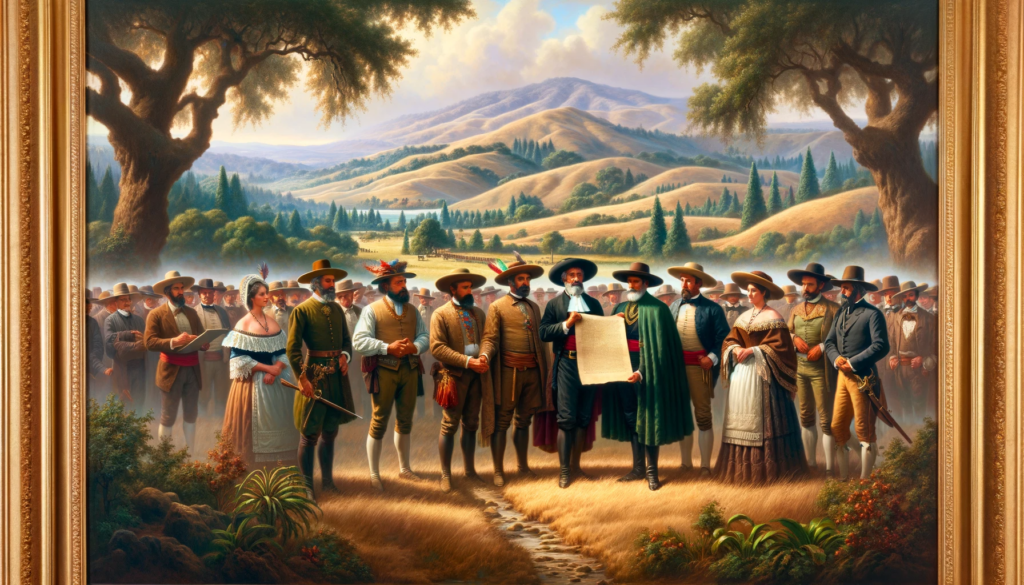The Establishment of The Peralta Land Grant
The Peralta land grant is more than just a piece of California history; it’s a story of determination, perseverance, and the enduring legacy of the Peralta family. As we delve into this intriguing tale, we’ll explore the history of the Peralta land grant, its role in shaping racial identity in the West, and its transformation into the bustling city of Oakland.

The Origins of the Peralta Land Grant
The Peralta land grant, also known as Rancho San Antonio, was a Spanish land grant awarded to Luis Maria Peralta in Alta California during the Spanish colonial period. Luis Maria Peralta was a Californio, a term used to describe the Hispanic residents of California during that time. The land grant was a vast expanse of land, encompassing areas now known as Oakland, San Leandro, and beyond.
The Peralta Family and Their Land
Luis Maria Peralta had four sons: Domingo, Vicente, Antonio, and Ignacio. Upon receiving the land grant, he divided the land among his four sons. This division played a crucial role in the development of modern-day Oakland, as each son’s share of the land contributed to the growth of different regions within the city.
The Peralta Hacienda and Its Significance
The Peralta Hacienda, situated on the eastern side of San Francisco Bay, became the social and commercial center of the vast rancho. The hacienda was a substantial structure, originally built using logs and dirt, but later replaced by a more substantial brick house. It served as a wharf on the bay, facilitating trade and commerce in the area.
The Impact of the Mexican-American War and Treaty of Guadalupe Hidalgo
The Peralta family’s claim to the Rancho San Antonio land grant faced challenges during a tumultuous period in California’s history. The Mexican-American War and the subsequent Treaty of Guadalupe Hidalgo in 1848 marked a significant turning point. Although the United States government promised all rights of citizenship and property ownership to the Californios (Spanish-speaking Californians) through the treaty, it required them to prove their land titles in court.
The Struggle to Prove Land Titles
The Californios, including the Peralta family, found themselves in a legal battle to prove their land titles. This process was arduous and often resulted in land disputes and lost acres. However, the United States Supreme Court eventually confirmed the Peralta title, recognizing their forty years of ownership.
Rancho San Antonio’s Transformation
As the United States expanded westward, the land that once belonged to the Peralta family underwent significant changes. With the California Gold Rush in the mid-19th century, the area around the Rancho San Antonio saw a population boom as prospectors and settlers arrived in search of fortune and opportunity. The once-rural region transformed into the bustling Fruitvale District of Oakland.
Racial Identity and the Peralta Land Grant
The story of the Peralta land grant is intertwined with issues of racial identity in the West. The Peralta family, like other Californios, faced challenges and discrimination as they navigated the changing political landscape. Their journey reflects the complex history of racial dynamics in California during the 19th century.
Conclusion
The establishment of the Peralta land grant is not just a historical event but a captivating tale of resilience and adaptation. The Peralta family’s struggle to maintain their land amidst shifting political tides is a testament to their determination. Today, the legacy of the Peralta land grant lives on in the vibrant city of Oakland, a place where history and progress converge, reminding us of the enduring spirit of those who came before us.

